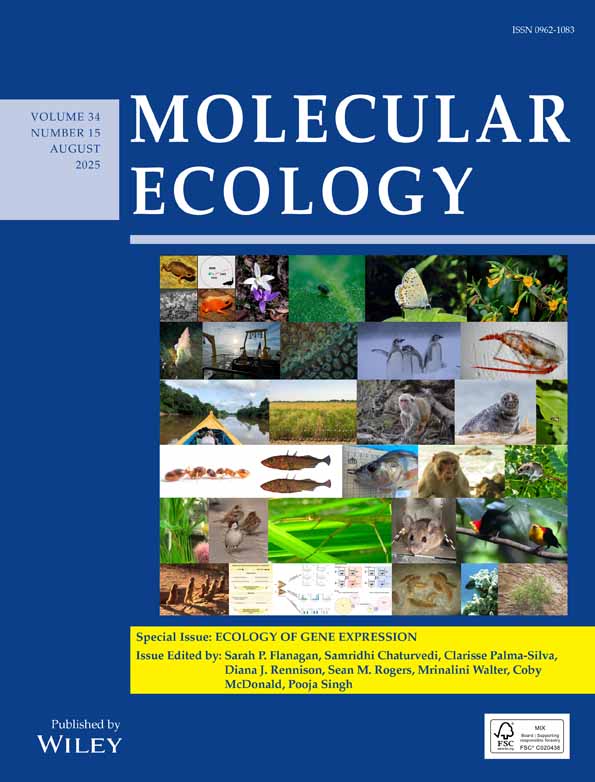Phylogeography and population structure of the Atlantic and Mediterranean green turtle Chelonia mydas: a mitochondrial DNA control region sequence assessment
Abstract
Mitochondrial (mt) DNA sequences were analysed to resolve the phylogeography and population genetic structure of Atlantic and Mediterranean populations of green turtles (Chelonia mydas). Analysis of sequence variation over 487 base pairs of the control (D-loop) region identified 18 haplotypes among 147 individuals from nine nesting populations. Pairwise comparisons of haplotype frequencies distinguished most nesting colonies, indicating significant genetic differentiation among rookeries and a strong propensity for natal homing behaviour by nesting females. Comparison of control region sequence data to earlier restriction fragment length polymorphism (RFLP) data for the same individuals demonstrates approximately a sixfold higher substitution rate in the 5′ end of the control region. The sequence data provide higher resolution both in terms of the number of mtDNA genotype variants and the phylogeographic relationships detected within the Atlantic region, and reveal a gene genealogy that distinguishes two groups of haplotypes corresponding to (i) the western Caribbean and Mediterranean, and (ii) eastern Caribbean, South Atlantic and West Africa. The data suggest that phylogeographic patterns in the Atlantic Ocean may be interpreted in terms of female nest site fidelity and episodic dispersal events. The distribution of mtDNA haplotypes within the region is thus explained by the geological and climatic alternations (glacial and interglacial) over the last million years.




